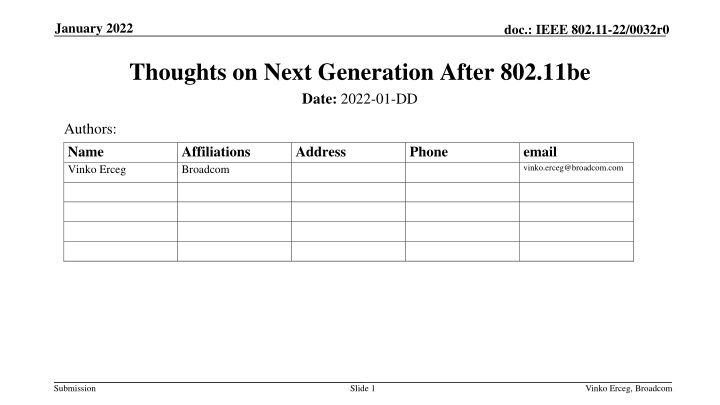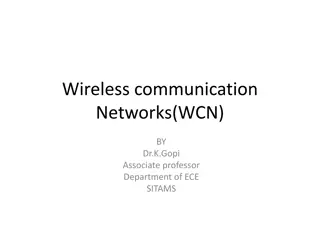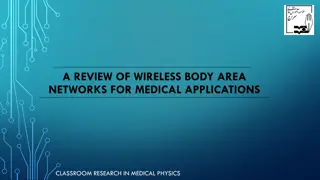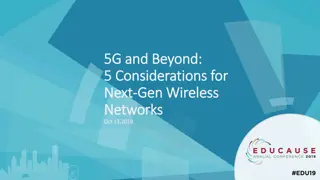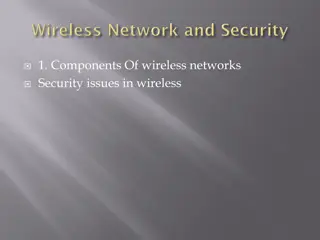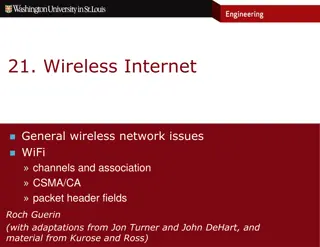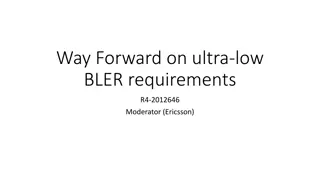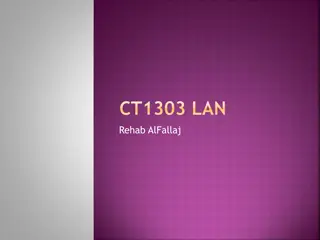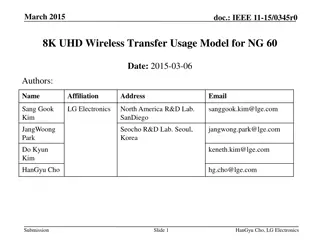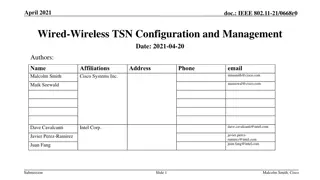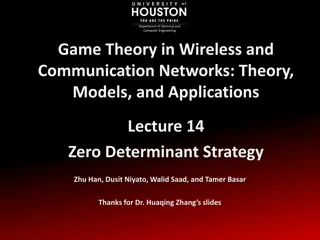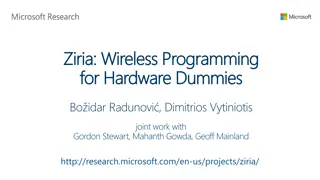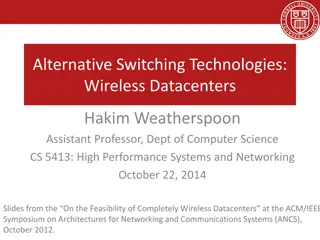Insights on Future Wireless Standards Development
Delve into the progression of IEEE 802.11 standards with a focus on the transition from 802.11be to the next generation. Discussions revolve around the evolution of PHY/MAC task groups, motivations for the new generation, and potential enhancements in system efficiency, latency, throughput, and spectral utilization. The proposal suggests redefining the scope of 802.11be Release 2 and shifting Multi-AP features to the upcoming iteration for further advancements in wireless technologies.
Download Presentation

Please find below an Image/Link to download the presentation.
The content on the website is provided AS IS for your information and personal use only. It may not be sold, licensed, or shared on other websites without obtaining consent from the author.If you encounter any issues during the download, it is possible that the publisher has removed the file from their server.
You are allowed to download the files provided on this website for personal or commercial use, subject to the condition that they are used lawfully. All files are the property of their respective owners.
The content on the website is provided AS IS for your information and personal use only. It may not be sold, licensed, or shared on other websites without obtaining consent from the author.
E N D
Presentation Transcript
January 2022 doc.: IEEE 802.11-22/0032r0 Thoughts on Next Generation After 802.11be Date: 2022-01-DD Authors: Name Vinko Erceg Affiliations Broadcom Address Phone email vinko.erceg@broadcom.com Submission Slide 1 Vinko Erceg, Broadcom
January 2022 doc.: IEEE 802.11-22/0032r0 Abstract Thoughts on Next Generation PHY/MAC Task Group Submission Slide 2 Vinko Erceg, Broadcom
January 2022 doc.: IEEE 802.11-22/0032r0 Introduction Release 1 802.11be is in the completion stage, comment resolution is well on the way There were some thoughts presented regarding Release 2 of 802.11be https://mentor.ieee.org/802.11/dcn/21/11-21-1598-01-00be-discussion-on-r2.pptx Conclusion of this presentation was to keep 11be R2 scope small, to move Multi-AP features from R2 to next generation (different alphabet) In this presentation we elaborate on the above thoughts regarding 802.11be R2 and propose formation of the new next generation PHY/MAC Task Group Submission Slide 3 Vinko Erceg, Broadcom
January 2022 doc.: IEEE 802.11-22/0032r0 Need for Next Generation PHY/MAC Task Group Historically, there was 4-5 year cadence in formation of new PHY/MAC Task Groups Driven by technological demand and product cycles, requirements such as: Device throughput Overall system throughput Efficiency Latency Reliability Power consumption Etc. Submission Slide 4 Vinko Erceg, Broadcom
January 2022 doc.: IEEE 802.11-22/0032r0 Some Examples That May Drive Next Generation Emerging Requirements Cloud AR/VR/MR Very low latency and high throughput Video - 8K, 16K Edge computing Sensory inputs Automation 6GHz spectrum utilization Other reasons: Just for the sake to have better, faster, with less power consumption and more reliable for the new release cycles of devices (phones, tablets, IoT devices, etc.) Submission Slide 5 Vinko Erceg, Broadcom
January 2022 doc.: IEEE 802.11-22/0032r0 Possible 802.11be R2 Outcome As mentioned earlier, seems there is a push for making 802.11be R2 slim Multi-AP to be moved to the next generation Above can be taken further to make 802.11be R2 less PHY centric Possibility of MAC/Protocol only 11be R2 PHY features that were discussed in 11be can be reconsidered in the next generation Task Group Discuss additional features that enhance, for example: Throughput (>2x 11be) Latency (< 1 ms, possibly < 0.1 ms) System efficiency Power consumption Better 6GHz spectrum usage Slide 6 Submission Vinko Erceg, Broadcom
January 2022 doc.: IEEE 802.11-22/0032r0 Next Generation Timeline 802.11be timeline: Study group was created in July 2018 D1.0 in May 2021 Industry interop end of 2023 Potential next generation task group timeline that follows 802.11be timeline: Study group in July 2022 D1.0 in May 2025 Industry interop end of 2027 Submission Slide 7 Vinko Erceg, Broadcom
January 2022 doc.: IEEE 802.11-22/0032r0 Proposal Discuss next in WNG need/drivers/requirements for the next generation PHY/MAC program Start next generation program Study Group in July 2022 Formation per IEEE 802.11 guidelines to meet the above date Submission Slide 8 Vinko Erceg, Broadcom
